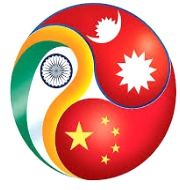Silk Roadster
China’s Belt and Road Initiative (BRI) has been a key driver of the country’s efforts to collaborate with Southeast and South Asian nations, including Nepal. As part of its 10th-anniversary celebrations of the BRI, China has introduced several new projects under the platform called the ‘Silk Roadster.’
The Belt and Road Initiative (BRI)
China’s BRI, also known as the One Belt, One Road (OBOR) initiative, is an ambitious global infrastructure development and investment strategy. Launched in 2013 by Chinese President Xi Jinping, the initiative aims to connect Asia with Europe and Africa through a network of infrastructure projects, including roads, railways, ports, and other facilities. It seeks to foster economic and trade cooperation, enhance connectivity, and promote people-to-people exchanges among participating countries.
The Silk Roadster Platform
In commemoration of the 10th anniversary of the BRI, China has introduced the Silk Roadster platform, under which five projects have been launched. The platform’s focus is to coordinate resources from local governments, universities, enterprises, and institutions in China to foster practical cooperation and facilitate people-to-people exchanges with partner countries.
The Projects under Silk Roadster
- Silk Road Embarkment: This project aims to improve the quality of citizens’ lives through small-scale projects. It focuses on enhancing essential services and infrastructure for the local population.
- Silk Road Empowerment: Prioritizing vocational training, this project involves Chinese schools offering courses to partner countries through the Cloud Platform for Generation Z Vocational Education Cooperation. It aims to nurture technical manpower for long-term development.
- Silk Road Enjoyment: This project centers on fostering people-to-people connections through cultural exchanges. It aims to promote mutual understanding and appreciation of diverse cultures.
- Silk Road Enlightenment: Targeting youth exchanges, this project aims to facilitate cross-cultural connections in Southeast and South Asian countries. It focuses on strengthening ties and promoting cultural understanding among the younger generation.
- Silk Road Enhancement: This project marks a departure from the traditional focus of the BRI and emphasizes China’s broader vision for comprehensive engagement and soft power diplomacy in the region.
Nepal’s Involvement and Challenges
Nepal signed the framework agreement on the BRI with China in 2017, expressing its interest in participating in the initiative. However, despite the agreement, no significant projects have been launched in the Himalayan state under the BRI in the last six years. Nepal has also faced challenges in implementing flagship BRI projects, such as the Trans-Himalayan Multi-Dimensional Connectivity Network and the China-Nepal Friendship Industrial Park, due to local opposition and protests.
Month: Current Affairs - August, 2023
Category: International / World Current Affairs








